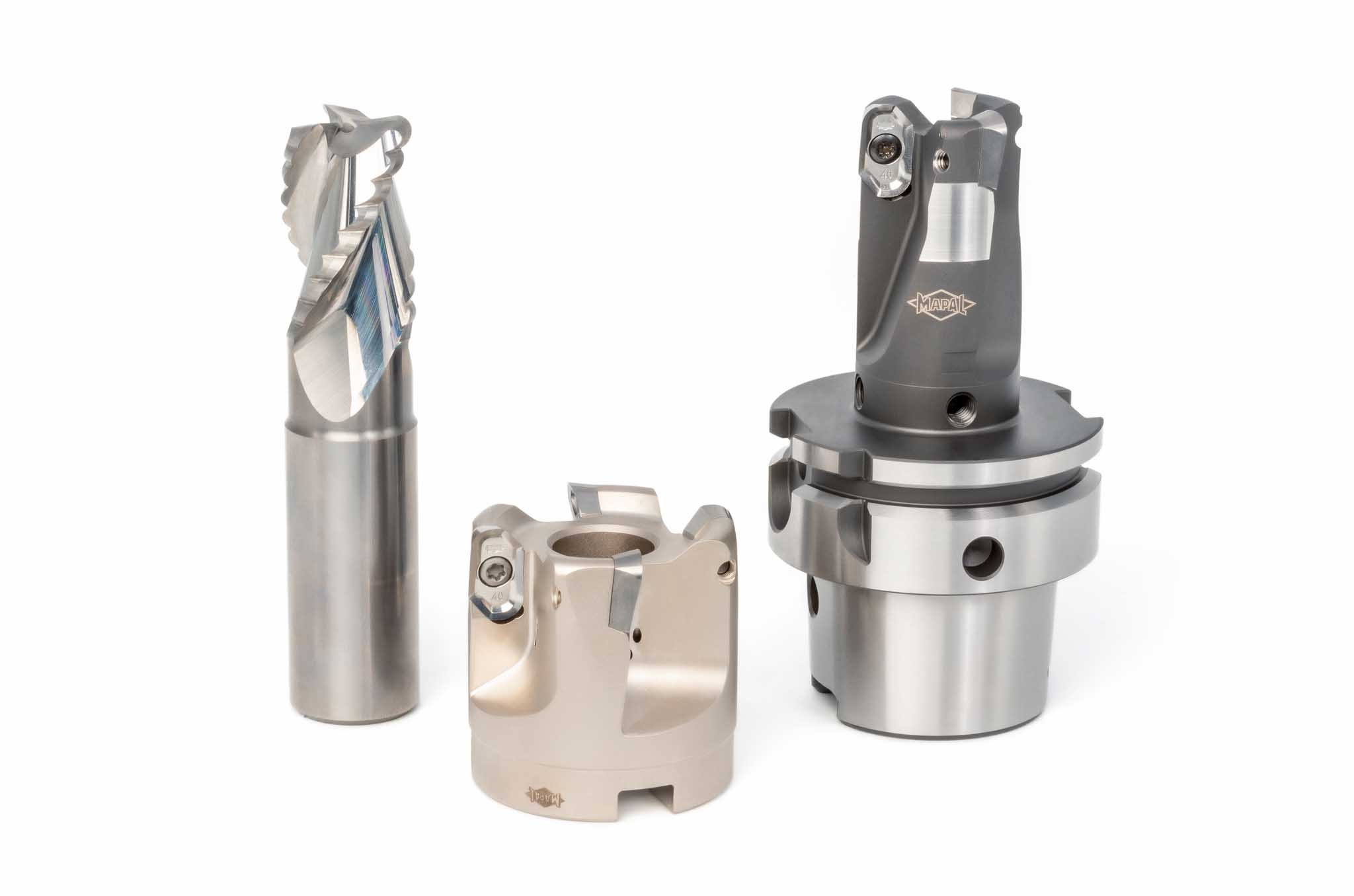Aerospace and Composites
In the aerospace industry, materials that are both high-strength and lightweight is the key. By making use of new combinations of materials, weight can be reduced further, strength and corrosion resistance can be increased and assembly can be simplified by using an integrated design. Whereas structural parts made of aluminium, titanium or high strength steel are machined on machining centres or gantry machines, final assembly machining is carried out by handheld machines, drill feed units or robots.
Part machining
In part manufacturing, the machining of parts is stationary, i.e. parts are cut in a machine in several clamping positions. While small to medium cubic parts can be machined on a machining centre, large parts require special gantry machines.
Solutions for final assembly
Even today, handheld machines are still used in the final assembly of aircraft, due to their size. For example, in final assembly lines (FAL), rivet holes are made in the outer skin of the aircraft’s fuselage. The tools are equipped with special guiding elements.
Latest news in the aerospace sector
-
12.04.2024
MAPAL bundles activities in aircraft assembly
In order to optimally and intensively support the area of final assembly in the aerospace industry, MAPAL has created a new department.
-
08.04.2024
IMPULSE 82 has been published
Developments, solutions and applications for the aerospace industry are the focus of issue 82 of the MAPAL technology magazine IMPULSE.
-
09.11.2023
Twice as fast to the titanium component with MAPAL
Aircraft supplier SME Aerospace Malaysia optimises its titanium component machining together with MAPAL and saves 3 hours per component.

Contact
Dr. Piotr Tyczynski Global Head of Segment Management Aerospace & Composites piotr.tyczynski@mapal.com Phone: +48 607 767 066













